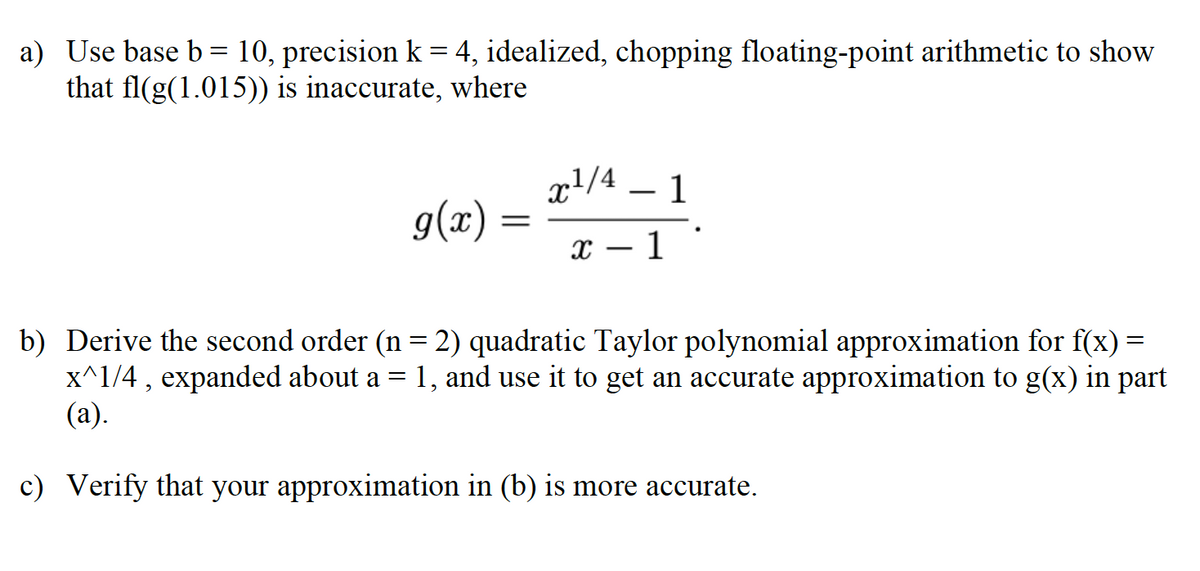Use base b = 10, precision k = 4, idealized, chopping floating-point arithmetic to show that fl(g(1.015)) is inaccurate, where xl/4 r!/4 – 1 - (x)6 x – 1 Derive the second order (n = 2) quadratic Taylor polynomial approximation for f(x) = x^1/4 , expanded about a = (a). 1, and use it to get an accurate approximation to g(x) in part Verify that your approximation in (b) is more accurate.
Use base b = 10, precision k = 4, idealized, chopping floating-point arithmetic to show that fl(g(1.015)) is inaccurate, where xl/4 r!/4 – 1 - (x)6 x – 1 Derive the second order (n = 2) quadratic Taylor polynomial approximation for f(x) = x^1/4 , expanded about a = (a). 1, and use it to get an accurate approximation to g(x) in part Verify that your approximation in (b) is more accurate.
Algebra & Trigonometry with Analytic Geometry
13th Edition
ISBN:9781133382119
Author:Swokowski
Publisher:Swokowski
Chapter2: Equations And Inequalities
Section2.5: Other Types Of Equations
Problem 56E
Related questions
Question

Transcribed Image Text:a) Use base b= 10, precision k = 4, idealized, chopping floating-point arithmetic to show
that fl(g(1.015)) is inaccurate, where
xl/4
g(x) =
1
х — 1
b) Derive the second order (n = 2) quadratic Taylor polynomial approximation for f(x) =
x^1/4 , expanded about a = 1, and use it to get an accurate approximation to g(x) in part
(а).
c) Verify that your approximation in (b) is more accurate.
Expert Solution
This question has been solved!
Explore an expertly crafted, step-by-step solution for a thorough understanding of key concepts.
This is a popular solution!
Trending now
This is a popular solution!
Step by step
Solved in 4 steps

Knowledge Booster
Learn more about
Need a deep-dive on the concept behind this application? Look no further. Learn more about this topic, advanced-math and related others by exploring similar questions and additional content below.Recommended textbooks for you

Algebra & Trigonometry with Analytic Geometry
Algebra
ISBN:
9781133382119
Author:
Swokowski
Publisher:
Cengage

Algebra & Trigonometry with Analytic Geometry
Algebra
ISBN:
9781133382119
Author:
Swokowski
Publisher:
Cengage